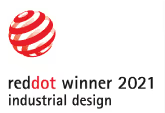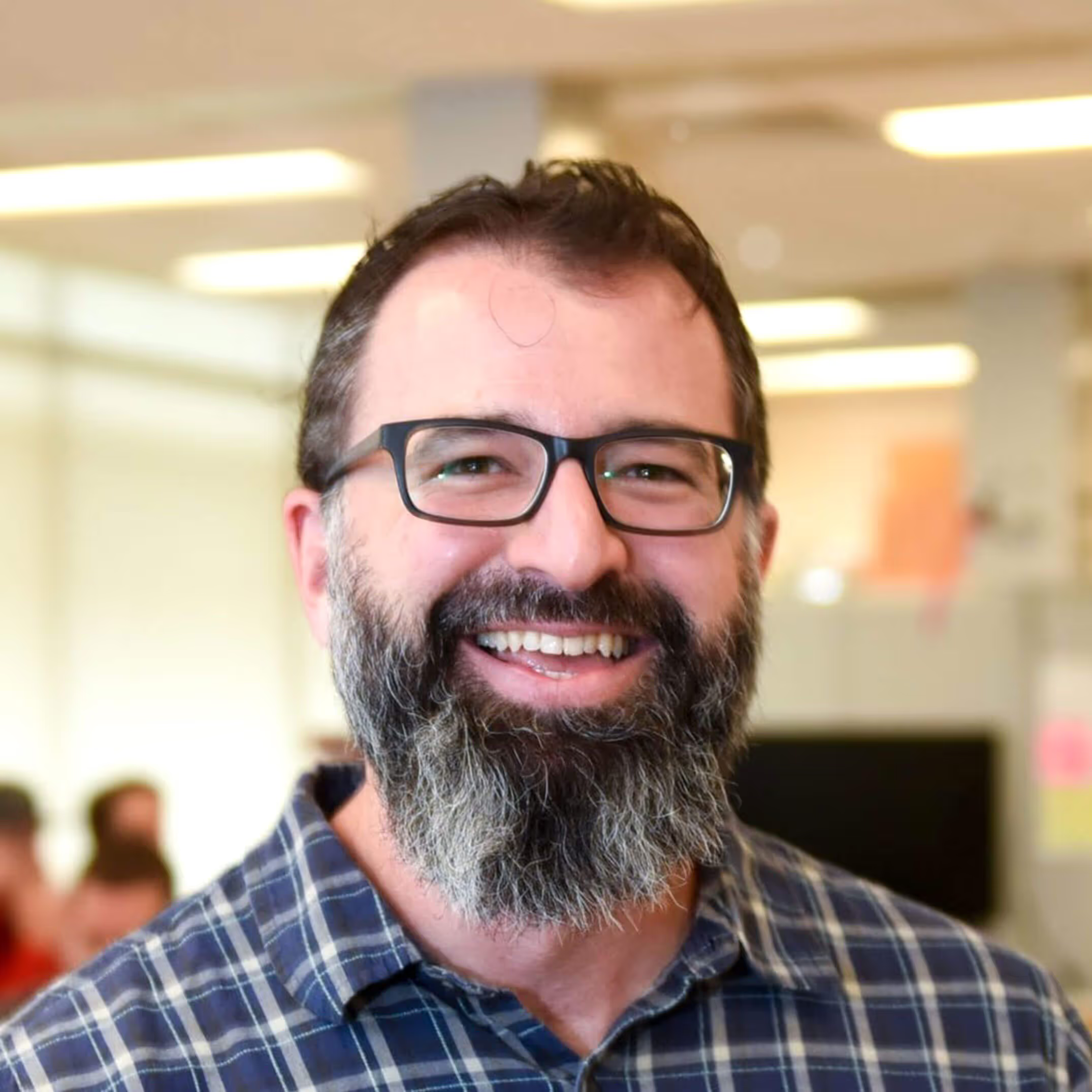Creating implicit empathy for physicians and patients
In the midst of this unique time when the healthcare system is transforming before our very eyes, the Trig team was given a unique opportunity. Dr. Matt Trowbridge is a physician, public health researcher, and associate professor at the University of Virginia School of Medicine. He invited us to facilitate a conversation with a group of medical school students enrolled in his Medical Design Program; a set of electives that helps future physicians tackle complex issues in healthcare by applying design thinking. We put the time with his students to use by choosing a topic that was both meaningful and solution-free. As a result, we have permission to share the insights we learned from the workshop publicly without our usual concern for protecting intellectual property.
Yes, we ran a virtual workshop on virtual healthcare, which, if you think about it, is the best way to create implicit empathy for the physicians and patients being considered and the challenges they face. While elective treatments are being postponed to prepare for the influx of COVID-19 patients, that doesn’t mean medical care needs to be brought to a full stop. By walking through this exercise, we hoped to build deeper empathy for the broader patient population as their care has transitioned to telemedicine solutions. The workshop provided everyone who participated the opportunity to practice digital collaboration techniques as well as insights to the rapidly changing telemedicine experience.
The Challenge:
Dr. Trowbridge challenged the Trig Team to share real time multi-site best practices of design with 9 of his students in 3 hours total. Our workshop occurred in the opening days of the pandemic just after all clinics, surgeries, and classrooms were abruptly shut down. As such, the topic he gave us was highly relevant,
“how might we help patients and physicians embrace use of telemedicine in under a week? — Go!”
It felt a little bit like being on an episode of Chopped. Limited time and surprise ingredients, yet delivering an exciting dish.
The Plan:
Given the time and topic, we opted to go with 3 facilitators, a 1-hour training session on the digital platform, and a 2-hour session of design strategy broken into 2 breakout rooms. With the context of the problem space and the desire to stay solution-free in focus, we chose to map The Patient Journey.
The Two Case Studies:
During the training session Dr. Trowbridge asked a key question: “What patient population would be most helpful to focus on?” We wanted to bring awareness to those who might be falling through the cracks and who would benefit most from staying out of the hospital yet continuing to receive care over the following months.
Individually, each student took the prompt and placed sticky notes on a virtual whiteboard to collect their thoughts and practice using the technology. Then, as a group, we discussed each potential direction. The medical students revealed their diverse specialties of interest in the resulting conversation. Topics ranged from the obvious challenges of being elderly, at-risk, and technology-challenged to the more subtle, sensitive topics of mental health, chronic disease, newborn care, or dermatology concerns. Dr. Trowbridge then assigned two students to prepare a patient case study to ground the workshop for the following day.
Meet Jenny and Adam
Jenny calls about her 2-month-old baby boy, Adam. They were scheduled for their 2-month well-child check, but were recently informed that it was cancelled due to COVID-19 and changes in the clinic schedule, and have been unable to find an open date to reschedule the appointment. Adam was born at 38w5d and underwent phototherapy in nursery before discharge. He was also noted to have a slight murmur, but Jenny was told it was “nothing to worry about." At the initial visit and one-month visit, Adam was progressing well with no concerns. Jenny is now concerned that Adam isn’t feeding as long and appears to tire during feeds. She doesn't know how to weigh him at home and is not sure if he has gained appropriate weight. Adam’s pediatrician wants to be able to monitor his growth curves and perform a physical exam to assess for underlying causes of poor feeding.
Enter Alex
Alex is a 45 year old female line cook who has lived with HIV for 10 years, struggling on and off with adherence to her medications. She was recently laid off from her job in the midst of COVID-19 and is concerned with potentially losing her health insurance and being able to pay for her already expensive anti-retroviral therapy, which doesn't always feel like a priority compared to food and bills. She's recently noticed a bump "down there" and wants to know if it's concerning, but her physician is only seeing patients via telemedicine right now.
The Two Stakeholder Journey Map Frameworks
In addition to exploring the patient journey, the Trig team was curious to compare two different frameworks.
The first being a traditional Jobs-To-Be-Done framework, “The Customer-Centered Innovation Map” as published by Lance Bettencourt and Tony Ulwick in the 2008 Harvard Business Review article. The second is the archetypal “Hero’s Journey Map,” as described by Joseph Campbell in the 1949 book, “The Hero With a Thousand Faces.”
We have observed over many facilitated sessions that the design and choice of framework can change how the workshop evolves. This was a unique opportunity to simultaneously compare two uniquely different models.
The Hero’s Journey
The first-time parent’s journey into the unknown seems to map to the Hero’s Journey, especially with the emotional exhaustion and sleepless nights. Humans have been telling some version of the Hero’s Journey to each other since we first started gathering around campfires. Generally, it refers to stories where a character ventures out into the unknown, facing challenges and conflict along the way, but who ultimately triumphs and returns “transformed” by their experience. The story structure can be found in most blockbuster films, including Star Wars and Harry Potter. More recently, the Hero’s Journey can be applied to even leaving your house to get groceries.
When is the Hero’s Journey applicable in product development?
The Hero’s Journey is a way of framing how the user experience might be. If you are exposing someone to a new skill or the unknown, it helps to ask what trials might they have with trying out your product? How might they recover from failure? IKEA, for example, presents their customers with the Hero’s Journey every time they try to assemble their products. The customer returns changed with valuable prizes at the end with a furniture piece they built themselves.

Customer-Centered Innovation Map
This references the 2008 HBR article, “The Customer-Centered Innovation Map” by Lance Bettencourt and Tony Ulwick. The authors claim that there is a universal structure to every Job-To-Be-Done with eight categories of job steps called a Universal Job Map. While a Stakeholder Journey isn’t the same as a Job Map, the steps as described are a useful starting point for understanding your stakeholders.
The core jobs as described by Bettencourt and Ulwick are Define, Locate, Prepare, Confirm, Execute, Monitor, Modify, and Conclude. Note that while shown in a specific order, the jobs don’t need to be completed in sequential order, nor completely finished to complete the desired outcome.
When is the Customer-Centered Innovation Map applicable in product development?
This framework helps to frame the journey in terms of Jobs-To-Be-Done. Most product development teams focus on the Execute job, since this is the critical moment of truth when their product needs to perform its task. It offers a logical starting place for mapping the entire process for hiring a product to perform the job.

The Virtual Tools
Video Conferencing
Just like an in-person workshop, the video conference is the room in which you gather. For the best experience, ask everyone to turn on their cameras and join via video. The human connection through seeing one another matters. Face-to-face in person meetings have the highest quality interaction, but a video conference where you can see the other person’s face is a close second.
Our pick for video conferencing: Zoom. We have experimented with a number of solutions over the years, but moved entirely to Zoom Pro in 2019. Compared to other options, (Join.me, GoToMeeting, Google, WebEx, Skype, etc.) Zoom is easier to set up and is more reliable to continue operating with an unstable internet connection.
Virtual Whiteboard
During an in-person workshop we like to use a variety of tools including adhesive-backed flip charts, Post-It Notes, Play-Dough, and whiteboards. These tools are important to document the conversation and encourage each participant to get visual with their ideas. The challenge with in-person workshops is that the physical artifacts then degrade over time, sticky notes fall down, and some poor soul needs to document the results of the workshop. We have found that virtual whiteboards have been a game-changer for allowing creative virtual workshops to be MORE productive than the in-person workshops.
Our pick for virtual whiteboards: Mural. Mural has uptime and connectivity limitations that can be frustrating. It runs into challenges where large images and large groups (more than 10 people) tend to break the tool. Despite those challenges, it has been intuitive and easy for anyone to learn.

Results
Jenny and Adam and the Hero’s Journey
The Hero’s Journey begins with the call to adventure. Like the classic Hero, we asked the students to start the breakout session working independently. We use this ‘heads-down, heads-up’ technique to maximize the creative performance of our workshop participants. This avoids the temptation to converge on the first verbalized idea from a team member and gives mental space for each person to reach beyond the low-hanging fruit. In this case, each student added virtual sticky notes describing their version of Jenny’s actions and emotions to match the stages of the Hero’s Journey. We came back together as a team to discuss patterns and to highlight unique insights to build Jenny’s overall telemedicine journey.
Everyone needs help, especially the hero of the story. Classic heroes are able to succeed in the face of the unknown because of the mentors and allies they encounter along the way. We quickly found we needed to change the patient perspective of the care staff from adversary to ally. To accomplish this, we created a secondary persona. The care team contacting Jenny to set up the challenge of meeting remotely with her pediatrician are also on their own journey into the unknown. We found it helpful to describe Jenny’s allies’ actions and emotions at each step to uncover opportunities to better support her.
The Hero’s Journey helps us plan for failure. Of course, we are aiming to create the ideal experience for Jenny, but this framework highlights the reality that failure will always happen despite our best efforts. When we accept the inevitability of setbacks, we can proactively plan to minimize their impact and find ways to recover faster.
Jenny grows and builds new skills. We found that the telemedicine journey offered the chance for Jenny to better document Adam’s progress. By documenting Adam’s vital signs herself, she learns important metrics so she can be more informed and participate more in Adam’s care. The care team also gains insight to Jenny and Adam’s home environment and behaviors in real-time, which otherwise wouldn’t be visible to them. With the care team’s help, she also finds she has a better “wait” experience.


Alex and the Customer-Centered Innovation Map
What did we learn from implementing the customer-centered approach with respect to Alex? As a reminder, she had recently noticed a bump "down there" and wants to know if it is concerning. Given the COVID-19 forced conditions of telemedicine, this presents a unique complex challenge.
Before taking our journey through the stages of the innovation map, we framed the overall job to be done as, “a sensitive sick visit via telemedicine.” The outcomes of our group session using Mural and Zoom are characterized in Alex’s Journey Map.
During the Define stage, Alex determined that her sensitive issue reached a level of concern that warranted contacting the provider. At this point, her goal is to understand whether follow up care is needed, or otherwise get reassurance.
During the Locate phase, we identified courage as the thing she most needs to find. In addition there are the basics, including the contact information, a method of connection, and a private location to meet from home.
As the journey progresses, so does the complexity. In practice, we realized that the sequential process as proscribed by the Customer-Centered Innovation Map doesn’t make sense as a path to uncover innovative opportunities. We needed to step back to see the whole picture and understand how the Execute phase may unfold to understand how to Prepare, and on back down the line to Locate.
An example of the non-sequential process came up as we tried to map the difference between a real-time exam of the sensitive area via webcam and a triage call with separate capture of photos and videos. Which is preferable? For starters, the downsides of a real-time webcam event are significant. There is a big difference between what private areas Alex may need to show the doctor versus all that she may end up showing when trying to manage a camera video feed in real-time. Perhaps it would be better to take videos and pictures prior to the sick visit after getting advice from a nurse during a triage call. Alex could have multiple opportunities to get the pictures and videos that she is comfortable with and only share what she approves. However, the downside in this scenario is the comfort level of sharing such sensitive information prior to the visit. Surely there would need to be some sort of secure portal, which would patients prefer? With Alex being so vulnerable during a real time session, does she need assurance no recording is taking place? May she have concerns uploading photos to a portal she may not fully trust?
With this one example, the telemedicine visit Execute phase takes on two very different paths. Each one ripples back to entirely different jobs of Locate, Prepare, and Confirm for the appointment.
What were the results of the initial customer-centered journey map exercise? We discovered the boundaries of our knowledge and gained the insight required to go back out to the market and ask targeted questions to further refine the map. Only after several stakeholder interactions will a more clear journey begin to unfold, revealing market segments and opportunities of value in which to focus innovation efforts.


Key Takeaways
We learned that getting journey maps to be accurate isn’t a one-time effort. As we experienced, it takes either a virtual room or a dedicated physical project space to capture the insights over time and really wrestle with the topic. The end result delivers VERY specific moments where critical and non-obvious solutions can be created.
“The Hero’s Journey model feels more abstract. You don’t get as precise of an alignment. Its strength is that it forces you to make sure the patient IS a Hero that has completed the Hero’s Journey - which is a good prompt. Compared to the Customer-Centered Innovation Map with targeted specific steps in the journey, it was outside of my safety zone.” - Dr. Matt Trowbridge
“How are people approaching their current use of telemedicine? While clinicians are trying to fit telemedicine into what they know and what they have done in clinic, they miss the bigger picture. As we went through our Hero’s Journey, we observed opportunities to make telemedicine BETTER than the normal office visit. A lot of feedback mechanisms that prompt visually/verbally in person could be better captured digitally and add adjunctive reports on how the patient is feeling at a deeper level. Many of the journey steps offered opportunities to get outside of the machine-like experience of clinics that run patients through as fast as possible. The potential for new communication formats within the telemedicine space can feel more relational than in-person clinic visits.” - Chris
“An emerging theme came up about the relationship between patient and provider. What is the threshold at which the patient needs to come in for a visit? What does the trust between the patient and provider look like in a telemedicine environment? How can that trust be preserved when dealing with a sensitive topic? If anything, I would recommend that providers reach out to patients to let them know that telemedicine IS an option. Patients might not know that telemedicine is an option and they should be invited to reach out to their physician if they have concerns.” - Sabrina
“We can use telemedicine and these journey maps to demonstrate better tools for providing care. Capturing additional data, seeing the patient environments in their home, building rapport and capturing better conversations than the in-person visits would allow us to see the patient as a whole. These new capabilities would help elevate telemedicine into the new standard of care for a lot of everyday in-clinic checkup procedures such as the high-frequency well-child visits needed in pediatrics.” -Elise
The students are already on their way to being world-class physicians. In addition, the Design Thinking skills and mindset taught to them by Dr. Trowbridge has given them the ability to be world-class collaborators with innovation in healthcare.





